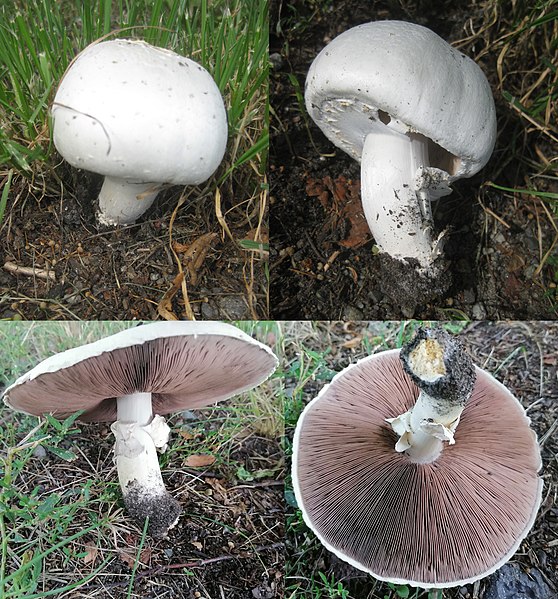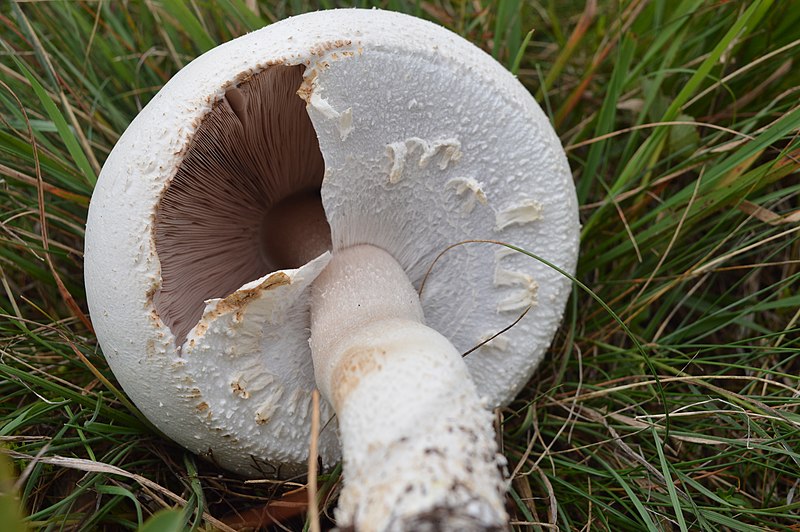Horse Mushroom Identification – Agaricus arvensis
Heads up
The Horse Mushroom is scientifically named Agaricus arvensis. Typically, you might spot them near stables, which could be why they’re called Horse Mushrooms. However, they’re not restricted to such places. They can also grow in meadows and sometimes form circular patterns called fairy rings. An interesting place to look for them is near nettles, a type of plant. Both the mushroom and nettles like nutrient-rich soil. The Horse Mushroom is a saprotrophic mushroom. This means it feeds on dead or decaying organic matter. Think of it like nature’s recycling system.
Horse Mushroom: Key Parts in Photos



How to identify Horse Mushroom
The cap of the Horse Mushroom can be quite impressive in size, typically ranging between 3-8 inches. It’s whitish and might have a smooth texture, and it gets a bit yellow, especially when it’s young. If you were to touch it, you’d find it dry to the touch.
As the mushroom matures, the cap grows from being spherical, like a ball, to flat. It’s thick, firm, and white in color. If you were to bruise or damage the cap, it turns a shade of yellow. Older caps sometimes have a yellow-brown shade overall.
Beneath the cap, you’d find gills that are initially pale pink. Over time, these gills darken and turn brown. Gills are the rib-like structures under the cap. For the Horse Mushroom, these gills are “free”, which means they don’t attach to the stem.
The stem is sturdy, up to 5 inches tall and has a ring around it. This ring is double-layered and, if you were to look closely at a young mushroom, you’d see a ‘cogwheel’ pattern underneath. The stem can sometimes have fine scales below the ring.
A critical point for safety: if you cut the base of the Horse Mushroom’s stem, it doesn’t turn bright yellow quickly. This is an essential detail because there’s a poisonous look-alike, the Yellow Stainer (Agaricus xanthodermus), which turns yellow immediately when cut.
The Horse Mushroom has a strong smell reminiscent of aniseed. This can help distinguish it from the Yellow Stainer, which has an unpleasant odor.
Want to learn more?

Disclosure: This post includes affiliate links. If you make a purchase through these links, we may earn a commission at no extra cost to you. We appreciate your support, as it helps keep this website running. Alternatively, you can search for the book title on Amazon if you prefer not to use the links. Thank you for your understanding and support!
